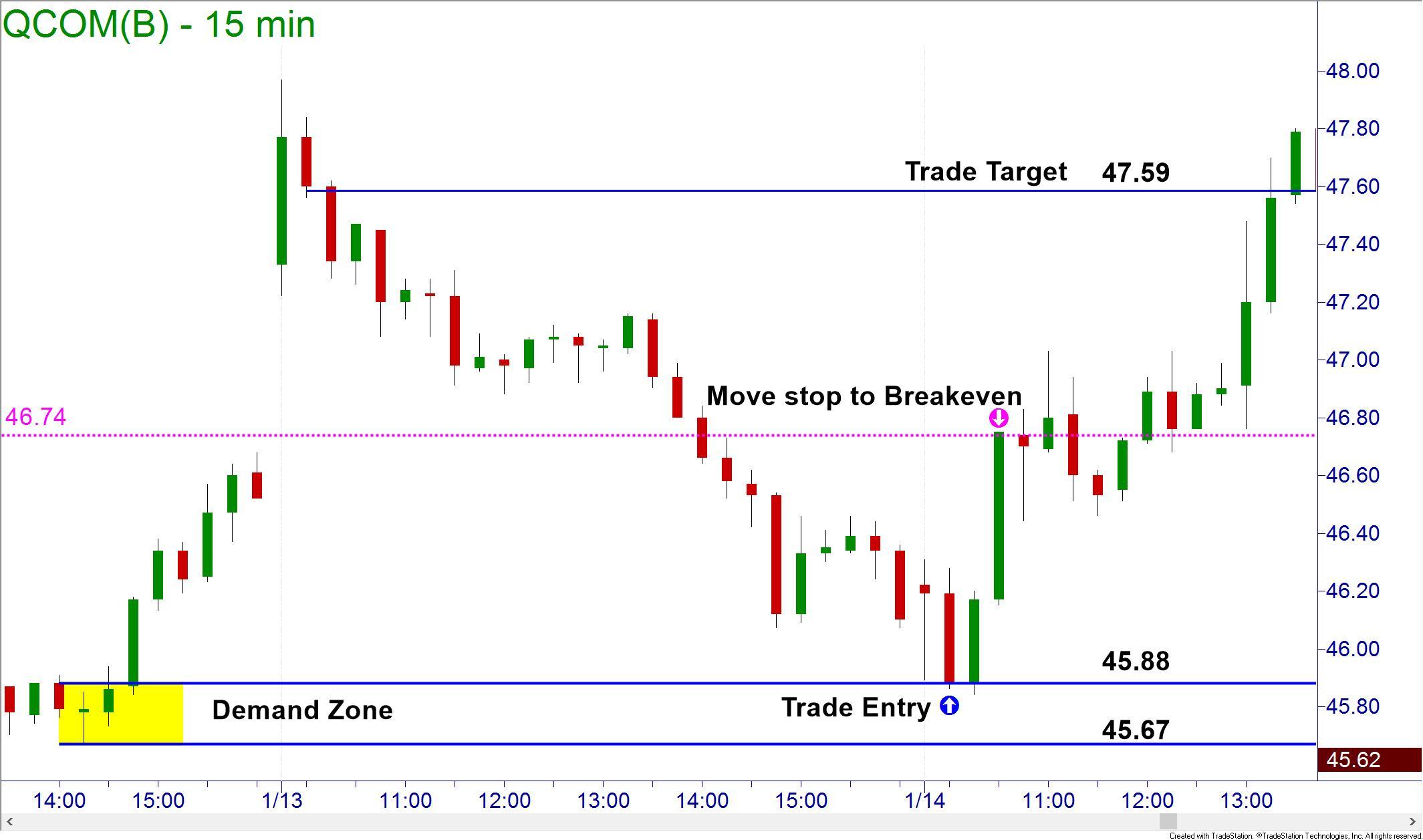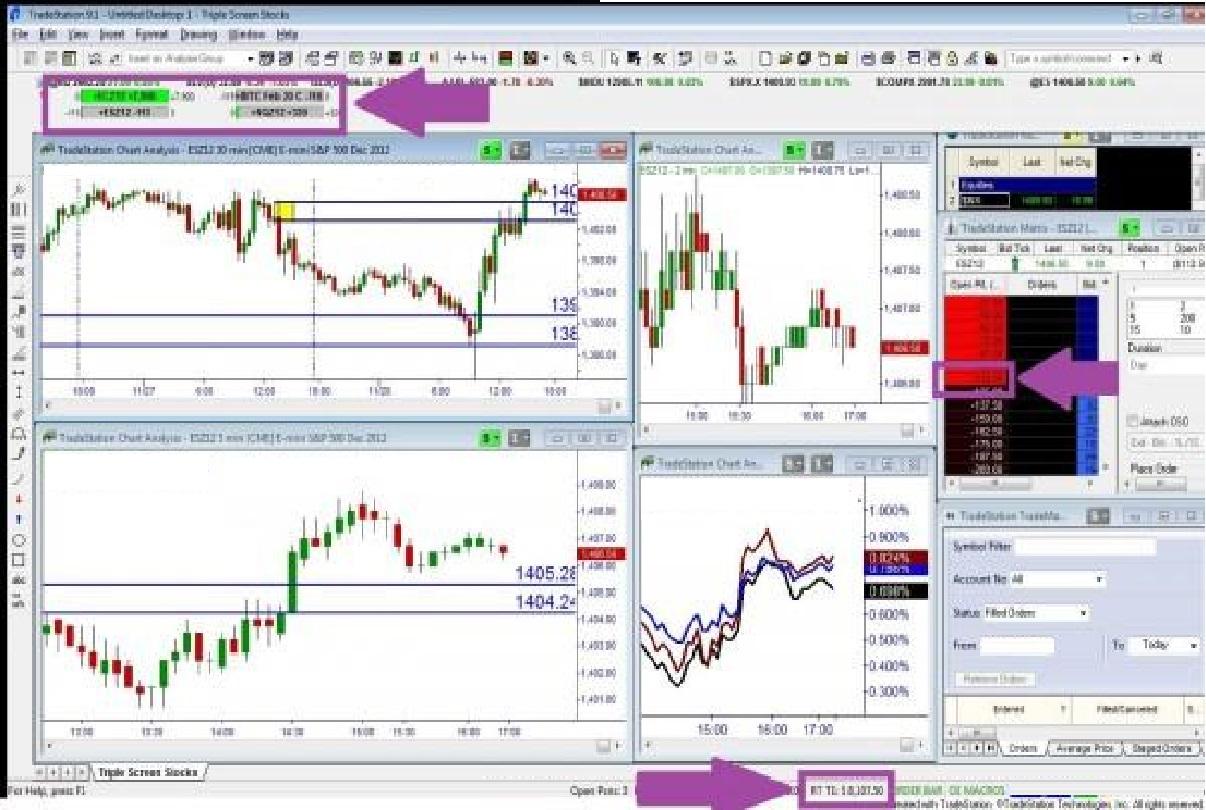“Cut your losses short and let your profits run.” So many traders chant that mantra while trading in the markets. Anyone who has ever had money in the markets knows that this is an easy thing to say but much harder to actually do. The emotions of fear and greed creep into our trading environment and influence our trading decisions. My students often ask me if there is a way for them to hold on longer to their trades for greater profits. Fortunately, there are some things we can do to help us to accomplish this.
The first is to have a trading plan that will detail your risk management and trade management strategies. This is such a critical tool to be a successful trader that we involve trade plan development in every one of Online Trading Academy’s courses. Having written rules for managing trades can help remove the effect of emotions on your trading since you will be following a prescribed strategy (basically following your orders) rather than trying to make decisions on the spot. Writing the trading rules down allows you to review them on a regular basis and see if you are consistently following them. You are holding yourself accountable for your actions and are more likely to follow them.
In your trading rules, you should have some sort of guideline as to when you will move your initial stop to breakeven. You could move it when the current profit is equal to the initial risk in the trade. The disadvantage of this method is that you can get stopped out too quickly from time to time. To avoid this, you could move the stop to breakeven once your profit is twice as much as the initial risk in the trade. Or if you have multiple targets for your trade, perhaps you move your stop only after price has moved halfway to your first target in the trade.
In the previous chart, a trader that moved their stop to breakeven would not have been as nervous during the small correction as a trader who had not. When small corrections in price occur in our trades, it often scares us into taking profits too soon.
You can also choose to use rules for adjusting a trailing stop as you are profiting in the trade. This is not necessary for some traders as they let price either hit their target or stop out at breakeven. But if you want, you can create a mechanical trailing stop that objectively exits you from a trade that does not quite reach your target before reversing. One method I use is a moving average. I will exit a profitable trade only if price closes beyond a moving average. This is easy to observe and can also be programmed into most trading platforms to occur automatically. The one thing you may notice about all of the above suggestions is that they are all rule based. We need rule based strategies to become more objective in trading and not emotionally biased.
Another method to help you hold onto your positions and grow profits is to hide the P/L on your platform. In TradeStation, you can see the current P/L of your position in so many places. When you are in a trade you do not need to know how much you are making or losing. You should have planned the trade before entry and should already know the potential loss if your stop is hit or the potential profit if you make it to your target. How is watching the P/L change going to help you? It does nothing but increase the power of your emotions as you become greedy or fearful which results in you breaking your trading rules.
Lastly, get paid for your effort. I trade impulses of the dominant trend. In our courses we teach you how to identify them. Impulses tend to pause, but break through supply or demand on the lower timeframes. Since that is the norm, I will often target supply or demand from a larger timeframe for my profit targets. This allows me to be able to take larger wins and greater profits. However, I am human and not immune to emotions like fear and greed. To lessen the impact of them on my trading, I will often plan to take profits at two or more targets and effectively scale out of a position. The first target will be the supply or demand from the timeframe where I entered the trade and the second will be from that larger timeframe I mentioned. The larger timeframe that I use is determined by a formula that I discuss in the XLT program.
When you take partial profits at a smaller timeframe target, you are more likely to be relaxed and allow the remainder of your position to run to the predetermined target. Already having been paid on the trade will allow you to mentally withstand the one or two candles that go against you or a small correction while you are in the trend on your way to your target.
So, the key to getting greater profits is to create trading rules that can make your trading more methodical rather than emotion based. To be a successful trader, you need to be consistent. To build consistency you need a plan. To learn how to create that plan, join us in one of our courses at Online Trading Academy today.
Neither Freedom Management Partners nor any of its personnel are registered broker-dealers or investment advisers. I will mention that I consider certain securities or positions to be good candidates for the types of strategies we are discussing or illustrating. Because I consider the securities or positions appropriate to the discussion or for illustration purposes does not mean that I am telling you to trade the strategies or securities. Keep in mind that we are not providing you with recommendations or personalized advice about your trading activities. The information we are providing is not tailored to any individual. Any mention of a particular security is not a recommendation to buy, sell, or hold that or any other security or a suggestion that it is suitable for any specific person. Keep in mind that all trading involves a risk of loss, and this will always be the situation, regardless of whether we are discussing strategies that are intended to limit risk. Also, Freedom Management Partners’ personnel are not subject to trading restrictions. I and others at Freedom Management Partners could have a position in a security or initiate a position in a security at any time.
Editors’ Picks
EUR/USD fluctuates near 1.0700 after US data

EUR/USD stays in a consolidation phase at around 1.0700 in the American session on Wednesday. The data from the US showed a strong increase in Durable Goods Orders, supporting the USD and making it difficult for the pair to gain traction.
USD/JPY refreshes 34-year high, attacks 155.00 as intervention risks loom

USD/JPY is renewing a multi-decade high, closing in on 155.00. Traders turn cautious on heightened risks of Japan's FX intervention. Broad US Dollar rebound aids the upside in the major. US Durable Goods data are next on tap.
Gold stays in consolidation above $2,300

Gold finds it difficult to stage a rebound midweek following Monday's sharp decline but manages to hold above $2,300. The benchmark 10-year US Treasury bond yield stays in the green above 4.6% after US data, not allowing the pair to turn north.
Worldcoin looks set for comeback despite Nvidia’s 22% crash Premium

Worldcoin price is in a better position than last week's and shows signs of a potential comeback. This development occurs amid the sharp decline in the valuation of the popular GPU manufacturer Nvidia.
Three fundamentals for the week: US GDP, BoJ and the Fed's favorite inflation gauge stand out Premium

While it is hard to predict when geopolitical news erupts, the level of tension is lower – allowing for key data to have its say. This week's US figures are set to shape the Federal Reserve's decision next week – and the Bank of Japan may struggle to halt the Yen's deterioration.
RECOMMENDED LESSONS
Making money in forex is easy if you know how the bankers trade!
Discover how to make money in forex is easy if you know how the bankers trade!
5 Forex News Events You Need To Know
In the fast moving world of currency markets, it is extremely important for new traders to know the list of important forex news...
Top 10 Chart Patterns Every Trader Should Know
Chart patterns are one of the most effective trading tools for a trader. They are pure price-action, and form on the basis of underlying buying and...
7 Ways to Avoid Forex Scams
The forex industry is recently seeing more and more scams. Here are 7 ways to avoid losing your money in such scams: Forex scams are becoming frequent. Michael Greenberg reports on luxurious expenses, including a submarine bought from the money taken from forex traders. Here’s another report of a forex fraud. So, how can we avoid falling in such forex scams?
What Are the 10 Fatal Mistakes Traders Make
Trading is exciting. Trading is hard. Trading is extremely hard. Some say that it takes more than 10,000 hours to master. Others believe that trading is the way to quick riches. They might be both wrong. What is important to know that no matter how experienced you are, mistakes will be part of the trading process.


